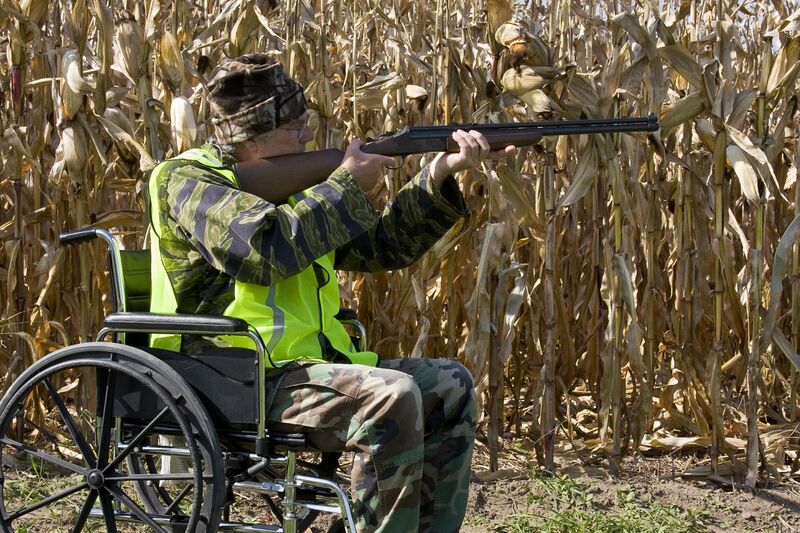
It is October and Fall is in full swing. Here in Colorado, that also means big game hunting is underway, as well as the start to some waterfowl hunting seasons. The Buckmasters American Deer Foundation estimates there are 1.7 million people with severe physical disabilities who enjoy hunting and shooting sports in the United States. The Colorado Parks and Wildlife report hunters and anglers fund more than 70% of Colorado’s wildlife conservation programs. This funding helps to ensure our 960 wildlife species can thrive for years to come. The impact of outdoor recreation on some people with disabilities can monumental. This can be as simple as accessing the wilderness or viewing animals in the wild. Many believe that being outdoors can help heal the body and soul.
Carey McWilliams, a blind hunter from North Dakota, embarked on a journey in the fall of 2011. He was looking to try out duck hunting. A blue-winged teal has a slate-gray head and neck, a black-edge white crescent in front of the eyes and a blackish crown. These ducks are the first ducks south in the fall and the last north in the spring. Carey was not new to the practicality of hunting as he had hunted pheasants a time prior. He used their noisy, straight-line flight path to follow their location and know where to shoot. The challenge ahead was duck would be a little more difficult than that. Before the hunt, Carey used a guide to sit down with him and helped him practice aiming and swinging on moving targets. When it came to the day of the hunt Carey states, “the types of things a blind hunter experiences in the field can be a lot different than sighted hunters.” A sighted hunter can pan the field and look for any sight of wildlife, while a blind hunter relies on small changes to any sound going on in the field. These sounds in the field can be the sounds of other hunters in the area, sloshing pond sounds of decoys being set in the pond, a sweeping list of the tones before dawn, and the sound you have been waiting for, the sound of duck wings flapping close overhead. The guide that is with him, alerting him by whispering in his ear that a flock is approaching. The guide then putting slight pressure on his right arm and left shoulder, and they swing together. A simple “now” command from the guide and Carey is now a duck hunter.
Here in Colorado, there is a non-profit volunteer organization called Outdoor Buddies. In 1984, Outdoor Buddies aimed to find therapeutic recreational opportunities for rehabilitating patients who had suffered spinal cord injuries. Since then Outdoor Buddies has expanded its programs to assist all people with mobility disabilities as well as outdoor educational and recreational opportunities for at-risk youth. Outdoor Buddies pairs volunteers with people with disabilities on a large variety of hunting activities. Some examples include big game, turkey, upland bird, and waterfowl hunts. If you’re not looking for a guided service Colorado Parks and Wildlife offers a mobility-impaired Big Game Hunting License Program. This program is separate from a guided service. To qualify for the program, you must have “a mobility impairment resulting from permanent medical conditions which makes it difficult for them to hunt without an attendant to assist them.” Outside of these programs, hunters with disabilities as defined in the Americans with Disabilities Act can complete a Wildlife Recreation Accommodation Permit Application. Examples of accommodations include; shooting from a stationary motor vehicle and/ or OHV, use of an assistant to track and dispatch wounded game, use of the exterior or a vehicle to support a firearm, and use of a crossbow or draw-lock device during archery season. For more information, reach out to your nearest Department of Wildlife Office.